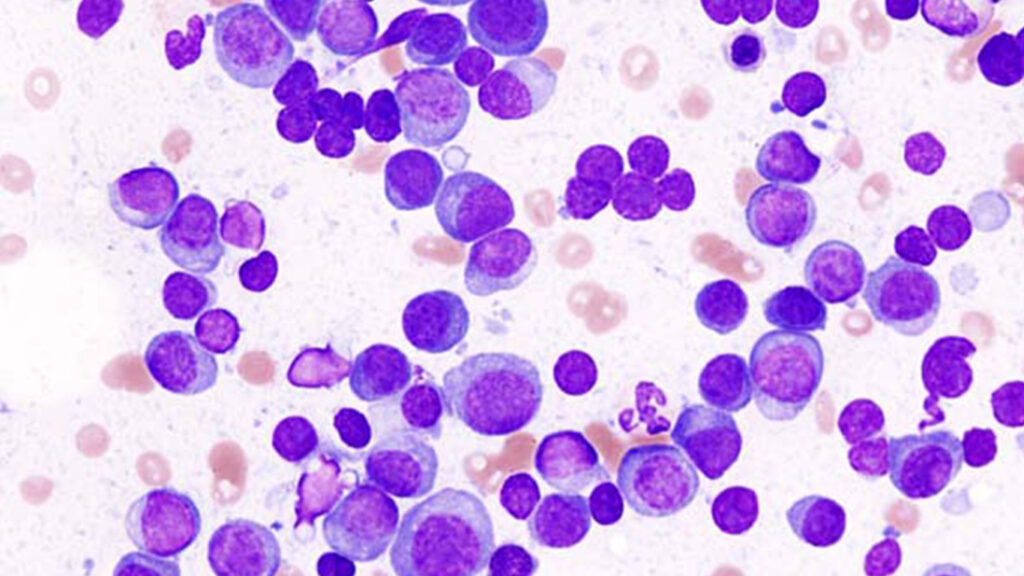A team from IDIBELL and ICO, using an orthotopic mouse model, has carried out a personalized oncology study of a very aggressive myeloma case. The used murine model, in which a biopsy of the human tumor is implanted in the same tissue as the mouse, is one of the most advanced existing in vivo models. This model faithfully reproduces the behavior of the tumor and its response to treatments, and therefore, it allows to study each case individually.
In this sense, the present work, published in the journal Disease Models and Mechanisms, has used the model to study a specific case of Multiple Extramedullary Myeloma, determine its molecular characteristics and define its response to different treatments. The work is a collaboration of two teams from the Oncobell program of IDIBELL and ICO: the research group in Tumor and Stromal Chemoresistance, of the ProCure program, and the Hematopoietic and Lymphoid Tumors group.
Multiple Myeloma is caused by the uncontrolled expansion of bone marrow cells. This type of myeloma increased its survival rate thanks to the latest advances. However, in some cases the malignant cells colonize other tissues, this is the case of Extramedullary Multiple Myeloma, in which the prognosis radically worsens, showing a life expectancy that does not exceed three years.
Dr. Lourdes Farre, project leader and principal investigator of the research group in Tumor and Stromal Chemoresistance, indicates “we have demonstrated that the mice orthotopic model is a powerful tool to expand the myeloma tumor tissue maintaining its genetic and histological characteristics, which allows an in-depth molecular study and the evaluation of tumor response to the different treatments “.
For her part, Dr. Anna Sureda, head of the group Hematopoietic and Lymphoid Tumors, highlights that “define the management and therapeutic strategy in patients with Extramedul·lar Multiple Myeloma is complicated, because it is difficult to predict which treatment will be more effective for each patient”. And she adds, “thanks to the implantation of human tumor tissue in mice, we can study in-depth the characteristics of each tumor and combine it with the different therapeutic options, which could allow us to go one step further in personalized medicine.”
This work has been financed with competitive funds from the Carlos III Health Institute and the Fundación hna.
The Bellvitge Biomedical Research Institute (IDIBELL) is a biomedical research center created in 2004. It is participated by the Bellvitge University Hospital and the Viladecans Hospital of the Catalan Institute of Health, the Catalan Institute of Oncology, the University of Barcelona and the City Council of L’Hospitalet de Llobregat.
IDIBELL is a member of the Campus of International Excellence of the University of Barcelona HUBc and is part of the CERCA institution of the Generalitat de Catalunya. In 2009 it became one of the first five Spanish research centers accredited as a health research institute by the Carlos III Health Institute. In addition, it is part of the “HR Excellence in Research” program of the European Union and is a member of EATRIS and REGIC. Since 2018, IDIBELL has been an Accredited Center of the AECC Scientific Foundation (FCAECC).

